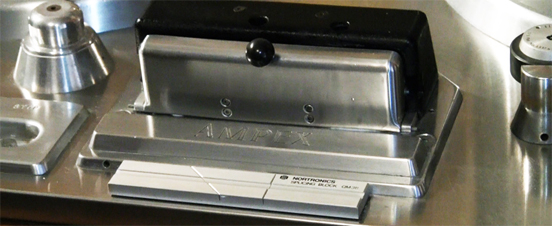|
|
|
|

|
|
|
|
Oberlin Smith 1888 |
|
Valdemar Poulsen 1898 |
|
Fritz Pfleumer 1881 |
|
John T. "Jack" Mullen US 1948 |
|
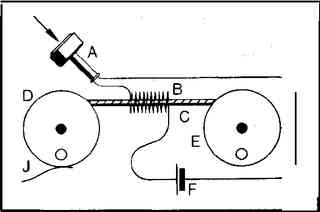
Smith's first diagram |
|
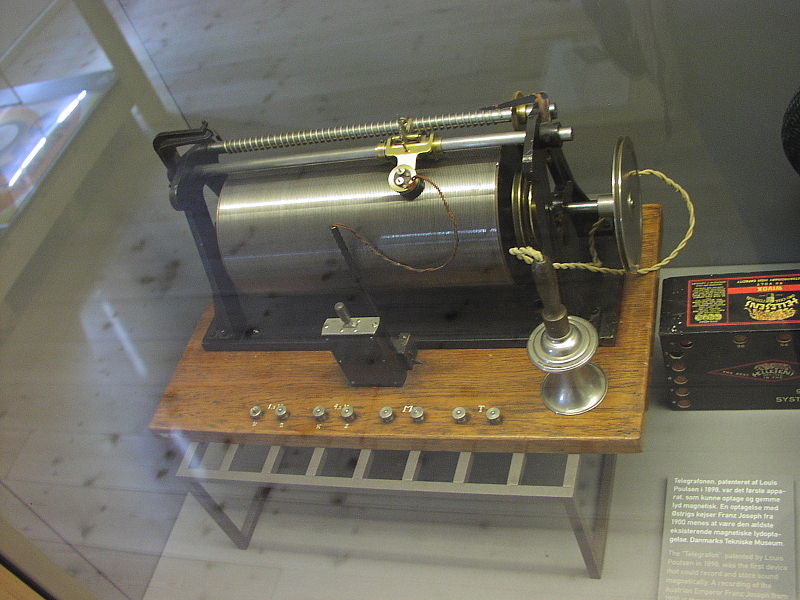
Poulsen's magnetic wire recorder
|
|
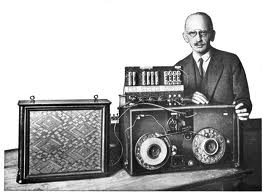
Fritz Pfleumer came up with idea of storing sounds on a magnetic tape |
|
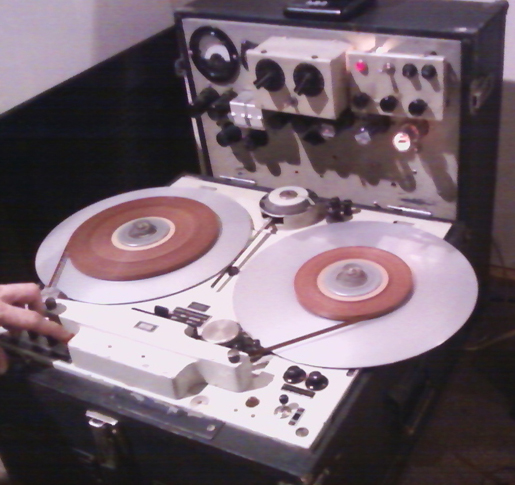
German Magnetophon brought to US by John Mullen
|
|
Magnetic recording was conceived of as early as 1877 by the American engineer Oberlin Smith and demonstrated in practice in 1898 by Danish engineer Valdemar Poulsen. Analog magnetic wire recording, and its successor, magnetic tape recording, involve the use of a magnetizable medium which moves with a constant speed past a recording head. An electrical signal, which is analogous to the sound that is to be recorded, is fed to the recording head, inducing a pattern of magnetization similar to the signal. A playback head can then pick up the changes in magnetic field from the tape and convert it into an electrical signal.
Magnetic tape recording as we know it today was developed in Germany during the 1930s at BASF (then part of the chemical giant IG Farben) and AEG in cooperation with the RRG. This was based on Fritz Pfleumer's 1928 invention of paper tape with oxide powder lacquered to it.
Magnetophon was the brand or model name of the pioneering reel-to-reel tape recorder developed by engineers of the German electronics company AEG in the 1930s, based on the magnetic tape invention by Fritz Pfleumer. AEG created the world's first practical tape recorder, the K1, first demonstrated in Germany in 1935 at the Berlin Radio Show.
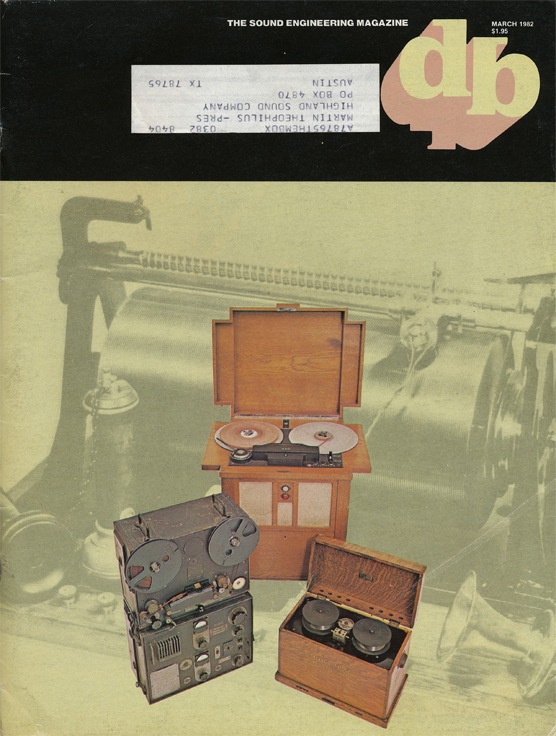
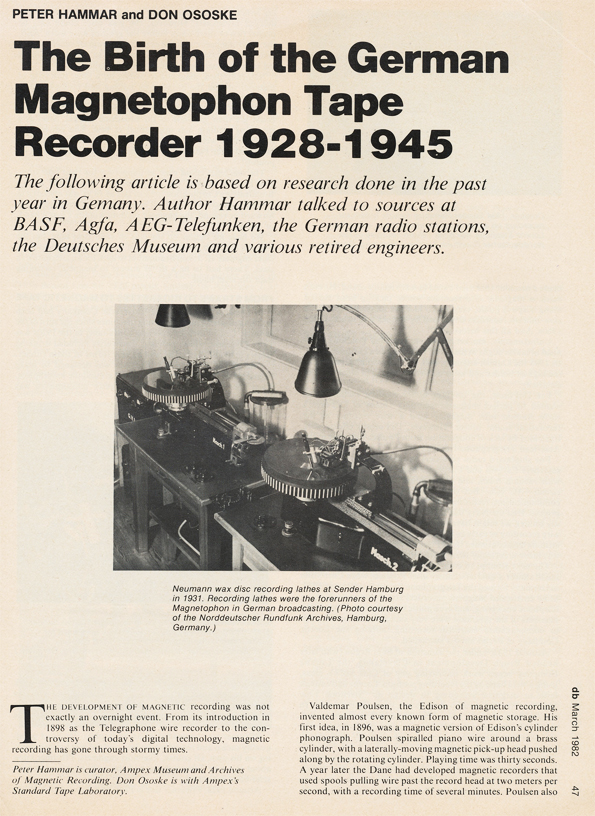
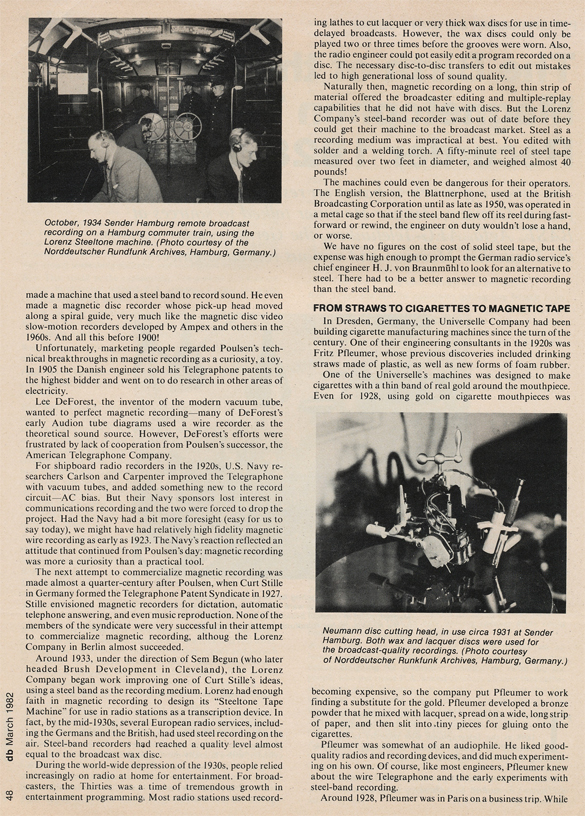
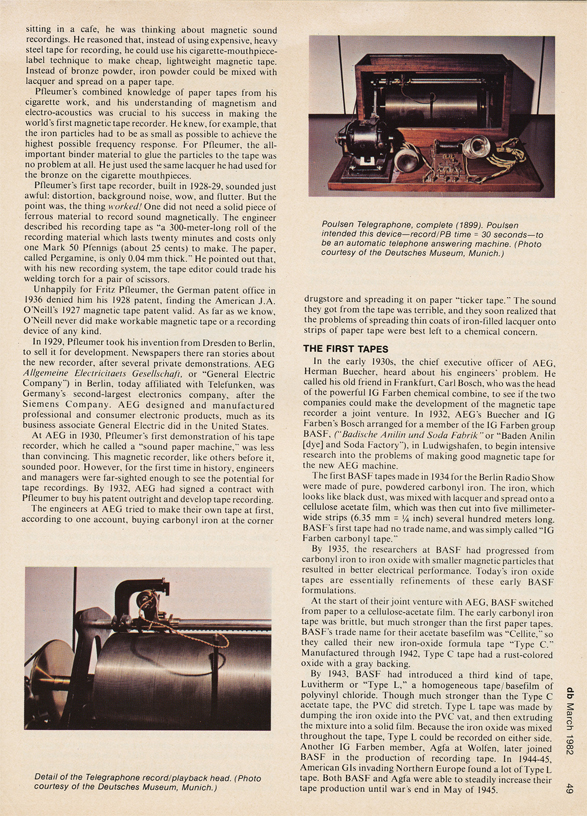
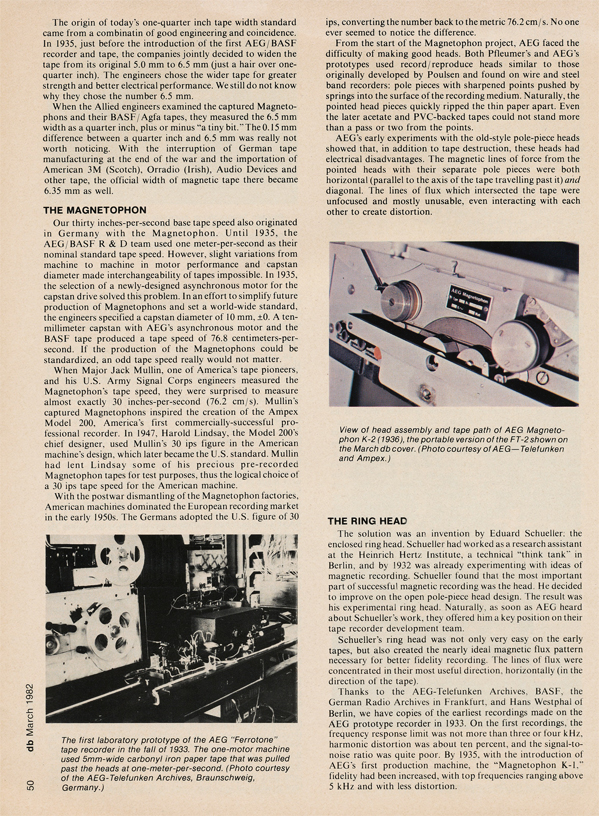
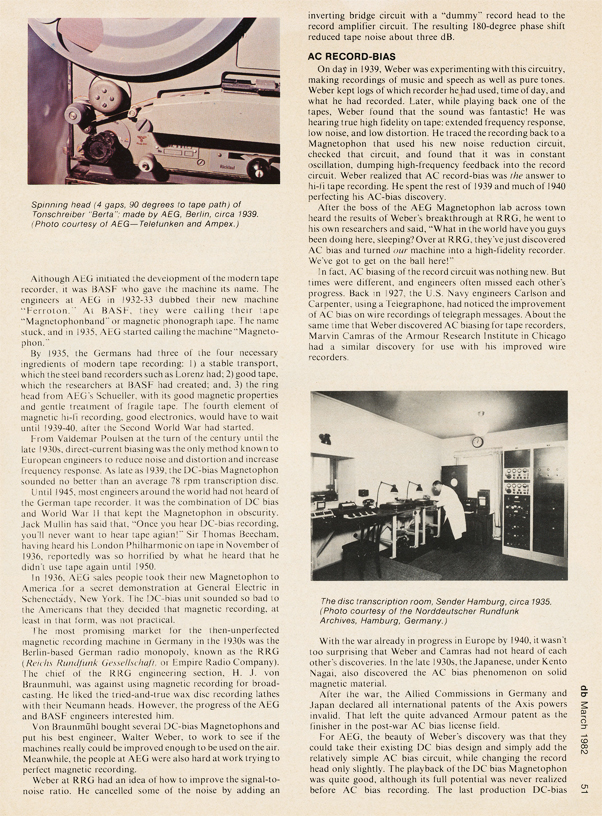
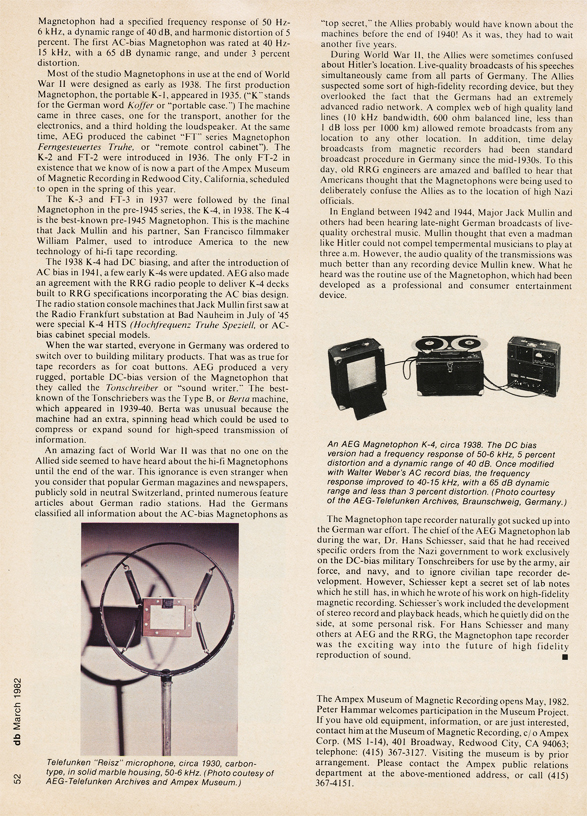
Birth of the German Magnetophon Tape Recorder 1928 to 1945 • Magnetism • David Winter - Magnetophon videos 1 2 3
Oberlin Smith (March 22, 1840 – July 19, 1926)
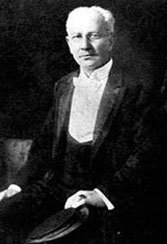 Born on March 22, 1840 in Cincinnati, Ohio to George R. and Salome (Kemp) Smith.
Born on March 22, 1840 in Cincinnati, Ohio to George R. and Salome (Kemp) Smith.
He started a small machine shop in Bridgeton, New Jersey, where he lived most of his life, which became known as the Ferracute Machine Company in 1877. For the entire existence of the company he was the president and chief engineer.
He died on July 19, 1926 in New Jersey.
On September 8, 1888, Smith published a short note entitled "Some Possible Forms of the Phonograph" in the British journal Electrical World, where he suggested (probably for the first time) the use of permanent magnetic impressions for the recording of sound. Smith suggested using cotton or silk thread, into which steel dust or short clippings of fine wire could be suspended. These particles were to be magnetized in accordance with the alternating current from a microphone source. Smith also discussed the possibility of using a hard metal wire or chain, but preferred the thread.
Smith built a machine to spin steel dust into thread, but could not harden the dust because of oxidation. As implementing his ideas would require thousands of hours of work, he published his theories but no one attempted to implement them. Many of Smith's ideas were independently reproduced by Valdemar Poulsen when he developed the first true magnetic recorder.
Valdemar Poulsen
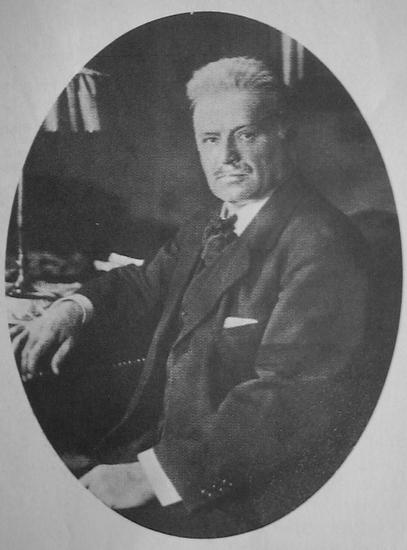 (23 November 1869 – 23 July 1942) was a Danish engineer who made significant contributions to early radio technology. He developed a magnetic wire recorder called the telegraphone in 1898 and the first continuous wave radio transmitter, the Poulsen arc transmitter, in 1903, which was used in some of the first broadcasting stations until the early 1920s.
(23 November 1869 – 23 July 1942) was a Danish engineer who made significant contributions to early radio technology. He developed a magnetic wire recorder called the telegraphone in 1898 and the first continuous wave radio transmitter, the Poulsen arc transmitter, in 1903, which was used in some of the first broadcasting stations until the early 1920s.
Poulsen was born on 23 November 1869 in Copenhagen. He was the son of the Supreme Court judge Jonas Nicolai Johannes Poulsen and Rebekka Magdalene (née Brandt).
The magnetic recording was demonstrated in principle as early as 1898 by Poulsen in his telegraphone. Magnetic wire recording, and its successor, magnetic tape recording, involve the use of a magnetizable medium which moves past a recording head. An electrical signal, which is analogous to the sound that is to be recorded, is fed to the recording head, inducing a pattern of magnetization similar to the signal. A playback head (which may be the same as the recording head) can then pick up the changes in the magnetic field from the tape and convert them into an electrical signal.
Poulsen obtained a Telegraphone Patent in 1898, and with his assistant, Peder O. Pedersen, later developed other magnetic recorders that recorded on steel wire, tape, or disks. None of these devices had electronic amplification, but the recorded signal was easily strong enough to be heard through a headset or even transmitted on telephone wires. At the 1900 World's Fair in Paris, Poulsen had the chance to record the voice of Emperor Franz Josef of Austria which is believed to be the oldest surviving magnetic audio recording today.
Poulsen developed an arc converter in 1908, referred to as the "Poulsen Arc Transmitter", which was widely used in radio before the advent of vacuum tube technology. The system was able to communicate between Lyngby and Newcastle with a 100-foot mast.
----------------------------
Martin, attached is the Morse Key that belonged to Valdamar Poulsen and later Harry Sands - Paul Rich
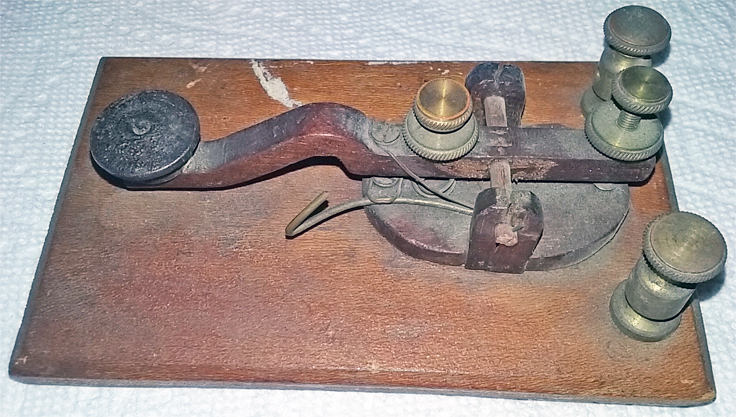
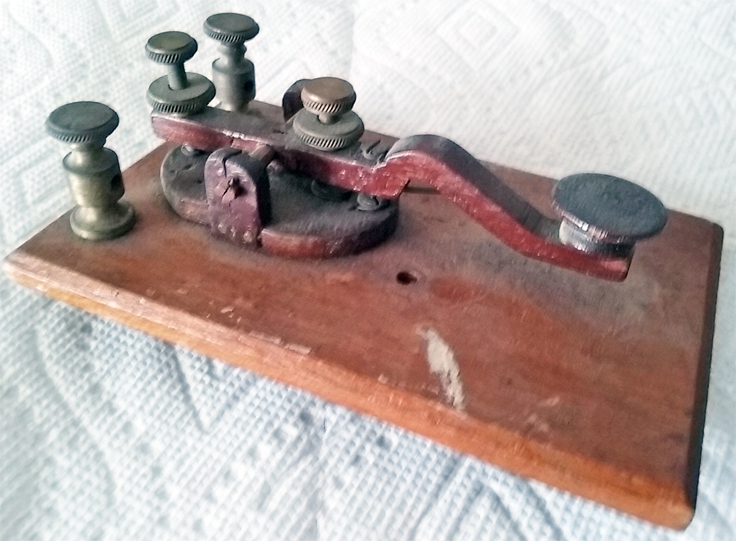
Valdamar Poulsen Morse code key
photos donated by Paul Rich
Paul A. Rich generously donated photos of his Poulsen's Disc Recorder #13 and the American Telegraphone Company wire recorder prototype.
From Paul: "Martin, Hope all is well? I was working in my garage in what my girls refer to as the Rich Archives, Ha! ,and came across a few of the negatives I took back in 1984 of the recorders I eventually sold to Ampex Museum there in California. ...The first two photos is of the Poulsen Disc Recorder #13, as stated on the original brass plate mounted on the top surface. There were two approximately 5" steel disc as part of the collection. I never tried to operate or plug in the recorders in fear of damaging a rare piece. Just loved looking at them.
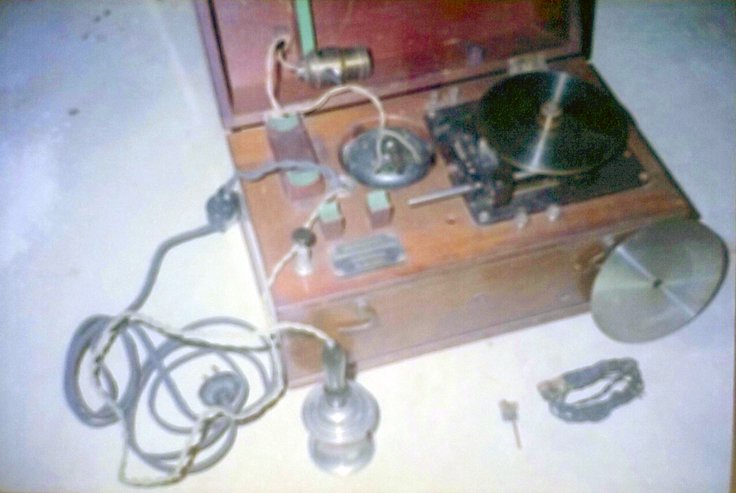
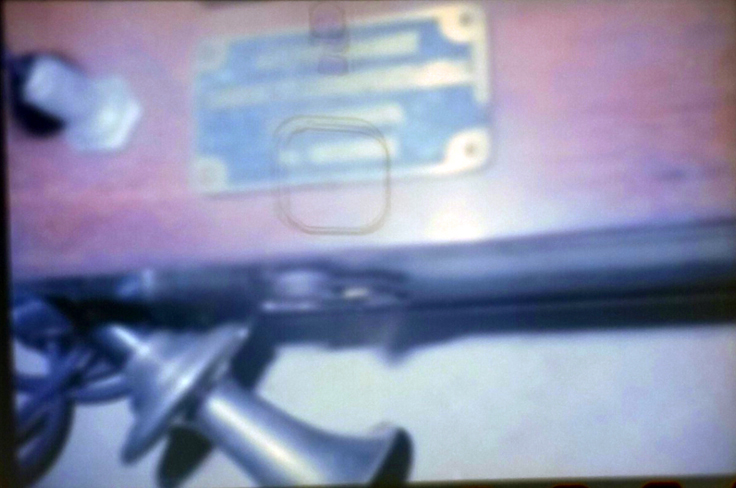
The other two photos show the American Telegraphone Company wire recorder prototype with lid that still has the lightbulb mounted inside the center for continued work by the inventors. I have a healthy amount of original photos and documents showing them with this item. The wire recorder was enclosed in what appeared to be a wooden sewing machine box. Must have been readily available back then. Sometime later after sale I received the original phone like handset, very ornate. Sometime when I'm able to locate it I will forward photos."
Paul A. Rich
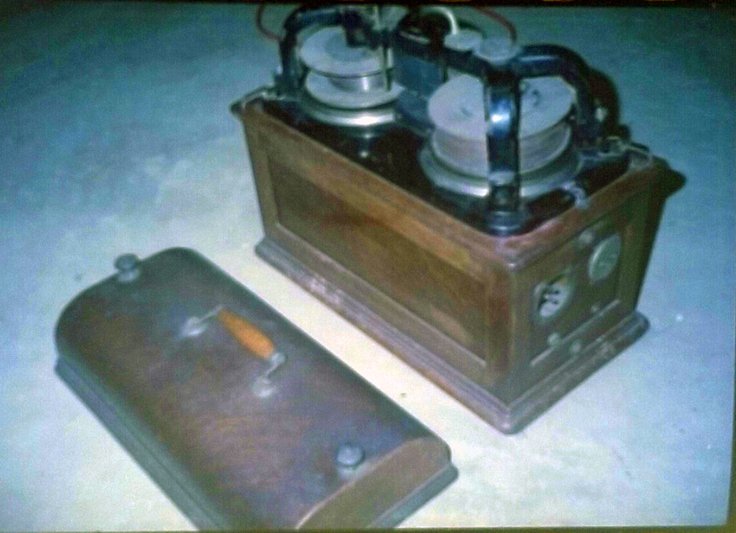
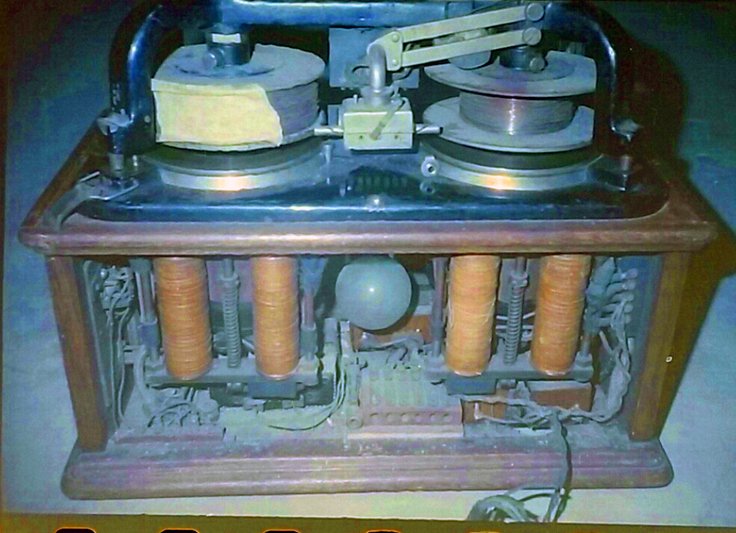
Go to more about Valdemar Poulsen
Fritz Pfleumer
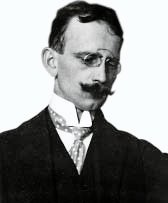 Fritz was born as the son of Robert and Minna, née Hünich. His father Robert (1848–1934) was born in Greiz, and his mother Minna (1846–1932) was born in Freiberg. Fritz had five siblings – Mimi, Hans, Hermann, Otto, and Mizi. Hans emigrated to the US.
Fritz was born as the son of Robert and Minna, née Hünich. His father Robert (1848–1934) was born in Greiz, and his mother Minna (1846–1932) was born in Freiberg. Fritz had five siblings – Mimi, Hans, Hermann, Otto, and Mizi. Hans emigrated to the US.
Fritz Pfleumer, with his magnetic tape machine (1931)
Pfleumer developed a process for putting metal stripes on cigarette papers and reasoned that he could similarly coat a magnetic stripe to be used as an alternative to wire recording.
In 1927, after experimenting with various materials, Pfleumer used very thin paper that he coated with iron oxide powder using lacquer as glue. He received a patent in 1928.
On 1 December 1932 Pfleumer granted AEG the right to use his invention when building the world's first practical tape recorder, called Magnetophon K1. It was first demonstrated at the IFA in 1935.
John "Jack" T. Mullin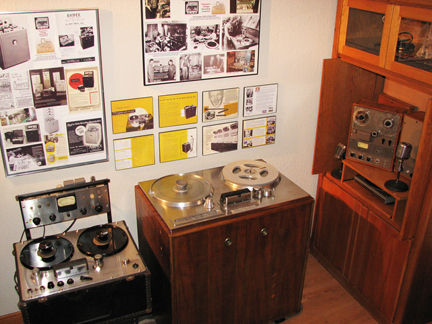
 (October 5, 1913 – June 24, 1999) was an American pioneer in the field of magnetic tape sound recording and made significant contributions to many other related fields. From his days at Santa Clara University to his death, he displayed a deep appreciation for classical music and an aptitude for electronics and engineering. When he died in 1999, he was buried with a rosary and a reel of magnetic tape. A 2006 documentary movie, Sound Man: WWII to MP3, was made about his life and contributions to sound recording.
(October 5, 1913 – June 24, 1999) was an American pioneer in the field of magnetic tape sound recording and made significant contributions to many other related fields. From his days at Santa Clara University to his death, he displayed a deep appreciation for classical music and an aptitude for electronics and engineering. When he died in 1999, he was buried with a rosary and a reel of magnetic tape. A 2006 documentary movie, Sound Man: WWII to MP3, was made about his life and contributions to sound recording.
After WW II , John "Jack" T. Mullin, who was in the US Army Signal Corp, brought back to the US, 2 German Magnetaphon reel to reel magnetic tape recorders. Mullin took the 2 Magnetophons apart and shipped them back to the US.
Following a number of demonstrations, Mullin attracted Bing Crosby's production folks. Crosby had been frustrated by the poor end quality of disc editing for his radio program. After Mullin demonstrated the ability to not only capture a great recording, but also to be able to edit the content with no loss of quality, the Crosby folks decided to adopt the technology. Mullin eventually went to work for Crosby as his Chief Engineer, using the 2 Magnetophons and the 50 reels of German tape. He edited the Crosby shows splicing the various tape pieces together as Crosby and his producers directed. Crosby expressed concern regarding there being only 2 recorders and a limited supply of tape. This eventually led to Crosby's backing of the Ampex company. Their first product was the Ampex 200A seen to right in our collection.
Richard H. Ranger
(13 June 1889 – 10 January 1962) was an American electrical engineer, music engineer and inventor. He served in the U.S. Army Signal Corps during World War I, earning the rank of Major. After the war, he  attended the Massachusetts Institute of Technology (MIT) from 1919 to 1923.
attended the Massachusetts Institute of Technology (MIT) from 1919 to 1923.
As a designer for the Radio Corporation of America (RCA), in 1924, Richard Ranger invented the wireless photoradiogram, or transoceanic radio facsimile, the forerunner of today’s fax machines. A photograph of President Calvin Coolidge sent from New York to London in November 1924 became the first photo picture reproduced by transoceanic radio facsimile. Commercial use of Ranger’s product began two years later.
In 1930, he formed a company, Rangertone, Inc., in Newark, New Jersey. The company, which marketed the electronic 'Rangertone Organ', was sold after his death, and remains privately owned as Rangertone Research, Inc.
In 1932, he invented the NBC chime machine, an automatic device to reproduce the familiar hand-struck NBC chimes used by the National Broadcasting Company (NBC) radio network. By connecting hiselectrically operated chimes with outdoor loudspeakers, he was later able to create the effect of church bells. He also did other work relating to electronic organs.
During World War II, he returned to the U.S. Army Signal Corps as a Colonel and was put in charge of radar and communications at the Radio and Radar Test Labs in Orlando, Florida. He later went to Europe as part of Field information Agency, Technical, an investigative team between 1944 and 1946 to examine German advances in electronics and wrote a series of technical reports on electrical components, communications, television, and (most significantly) magnetic tape recording.
After the war, Ranger's work led to further development of magnetic tape recorders. He developed a product using the German technology, and demonstrated it to potential users, including the members of the Institute of Radio Engineers, the National Broadcasting Company, the Radio Corporation of America, the American Institute of Electrical Engineers, and individuals like singer Bing Crosby.
His subsequent refinements led to improved synchronization of sound and visual portions of films. The Academy of Motion Picture Arts and Sciences presented Ranger with an Oscar in 1956 for his development of the tape recorder and synchronization of film and sound.
Richard H. Ranger was inducted into the New Jersey Inventors Hall of Fame in 1997.
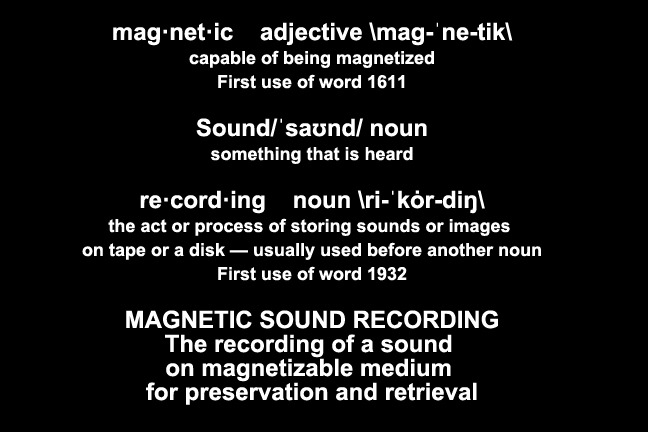 Today sound recording is pretty much taken for granted. A smart phone can capture very high quality sound. Touch a screen and instantly sound is recorded...video too! It's interesting that the phone became such a good sound recorder, because in the late 1890's it was Valdemar Poulsen, a Danish engineer who developed a magnetic wire recorder in 1899. Why? To be a device to take messages from the telephone. Telephone answering devices and dictating recorders drove the early wire recorders, as well as Edison's cylinder recorders & players.
Today sound recording is pretty much taken for granted. A smart phone can capture very high quality sound. Touch a screen and instantly sound is recorded...video too! It's interesting that the phone became such a good sound recorder, because in the late 1890's it was Valdemar Poulsen, a Danish engineer who developed a magnetic wire recorder in 1899. Why? To be a device to take messages from the telephone. Telephone answering devices and dictating recorders drove the early wire recorders, as well as Edison's cylinder recorders & players. 
These devices captured sound using vibrations and were available to the public who mostly used them to play back music. Prior to WW II, the wire recorder and the vinyl records were all folks had, although there were innovations in optical and movie sound recording. These devices were definitely not readily portable.
In the 1930's & 1940's the technology of recording direct to a vinyl record had produced some very high quality sound recordings. The down side was that the only method available to edit out a mistake, was to either start over, or copy a selection to another vinyl record resulting in a loss of quality.
Marvin Camras (1916–1995) was an electrical engineer and inventor who was widely influential in the field of magnetic recording. Camras built his first recording device, a wire recorder, in the 1930s for a cousin who was an aspiring singer. Shortly afterwards he discovered that using magnetic tape made the process of splicing and storing recordings easier. Camras's work attracted the notice of his professors at what is now Illinois Institute of Technology (IIT) and was offered a position at Armour Research Foundation (which merged with Lewis Institute in 1940 to become IIT) to develop his work.
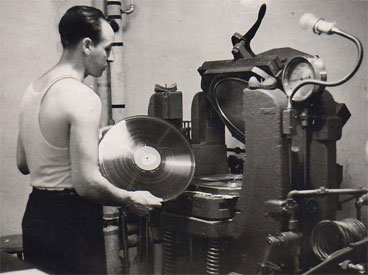 In 1933 this all changed. German engineers with AEG created a magnetic reel to reel tape recorder based on the magnetic tape invention of Fritz Pfleumer in 1927. It was this magnetic tape that changed everything. After WW II the technology began expanding all over the world. The key components were: tape could be edited without a trace of a splice; tape could be copied with little loss of quality: and tape could be erased and reused over and over.
In 1933 this all changed. German engineers with AEG created a magnetic reel to reel tape recorder based on the magnetic tape invention of Fritz Pfleumer in 1927. It was this magnetic tape that changed everything. After WW II the technology began expanding all over the world. The key components were: tape could be edited without a trace of a splice; tape could be copied with little loss of quality: and tape could be erased and reused over and over.
It was the Baby Boomers who first realized the benefits of the magnetic tape technology. While recording studios ha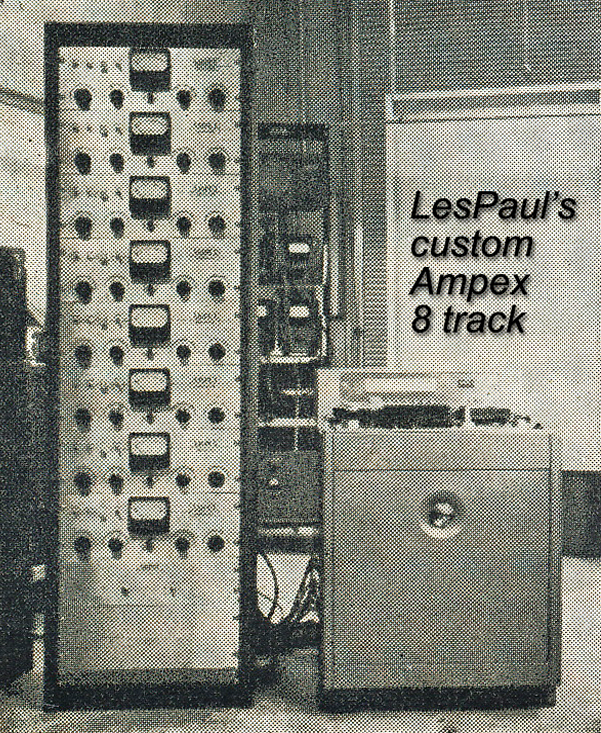 d professional recorders, smaller and very portable reel tape recorders were available beginning in the early 1950's and evolved into the 1960's and 1970's. Before the Sony Walkman, there were many 3 inch, 5 inch and 7 inch tape recorders, which allowed you to record and playback sound anywhere.
d professional recorders, smaller and very portable reel tape recorders were available beginning in the early 1950's and evolved into the 1960's and 1970's. Before the Sony Walkman, there were many 3 inch, 5 inch and 7 inch tape recorders, which allowed you to record and playback sound anywhere.
Next came multi-tracking first developed by Les Paul. This evolved into 4, 8, 16, 24 & 48+ track recorders. This was a very exciting era for sound recording. Recording engineers were experimenting with all types of special effects. Tape recorder manufacturers were incorporating the innovations into new products with hundreds of models being released every year. In 1962 the 1/4 inch tape had been reduced to 1/8 inch by Philips and loaded into the compact cassette format.
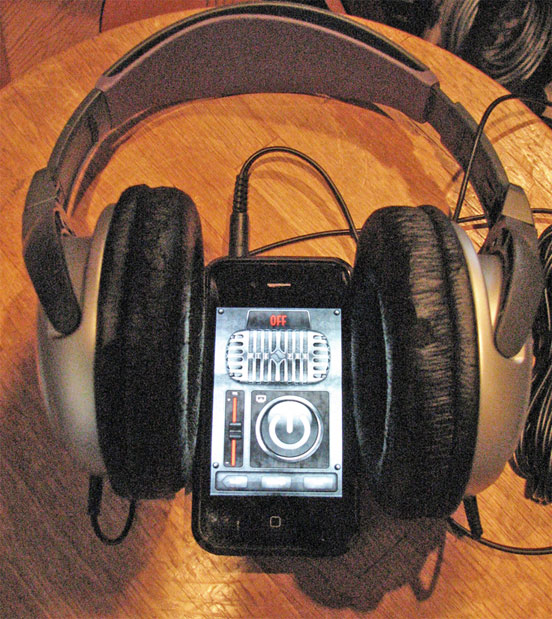 The magnetic sound recording technology began and enabled the digital technology. In 1967 the first digital audio magnetic tape recorder was developed and by 1982 the first compact discs (CDs) are marketed by Philips and Sony. The reel to reel analog open reel tape recorder quickly passed into history with only a few professional models continuing to be produced.
The magnetic sound recording technology began and enabled the digital technology. In 1967 the first digital audio magnetic tape recorder was developed and by 1982 the first compact discs (CDs) are marketed by Philips and Sony. The reel to reel analog open reel tape recorder quickly passed into history with only a few professional models continuing to be produced.
So there was this wonderfully magical period of discovery and innovation of magnetic sound recording that basically went from the early 1930's to the early 1980's. This is what the Museum of Magnetic Sound Recording is ABOUT! The Museum will preserve these unique magnetic recording devices by: researching and documenting their history; maintaining and restoring the devices; and displaying the recorder for demonstration to the general public.
While based initially on the reel to reel, or open reel analogue tape recorder collection loaned to the Museum by Phantom Productions, Inc., the museum will also be representing other areas of sound recording techniques throughout history.
History of Recording up to 1958
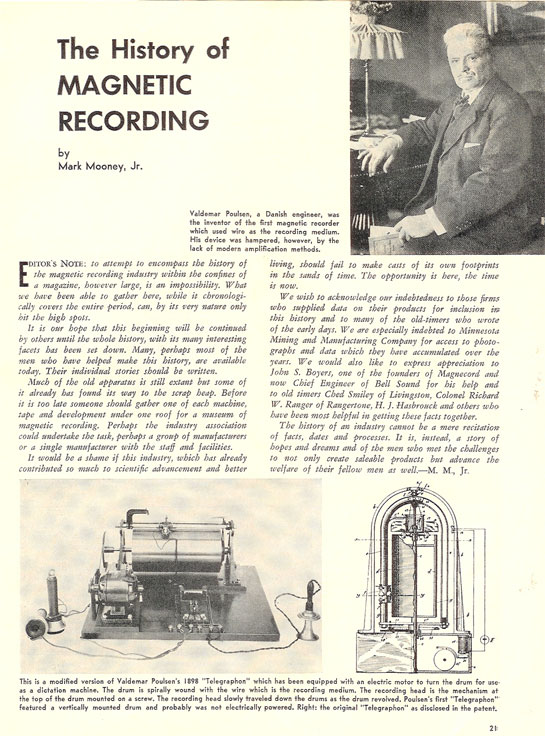
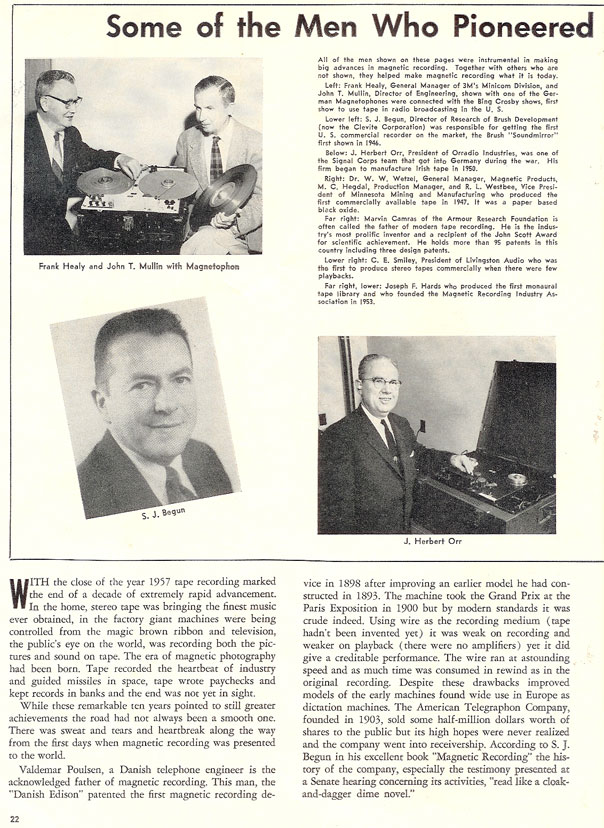



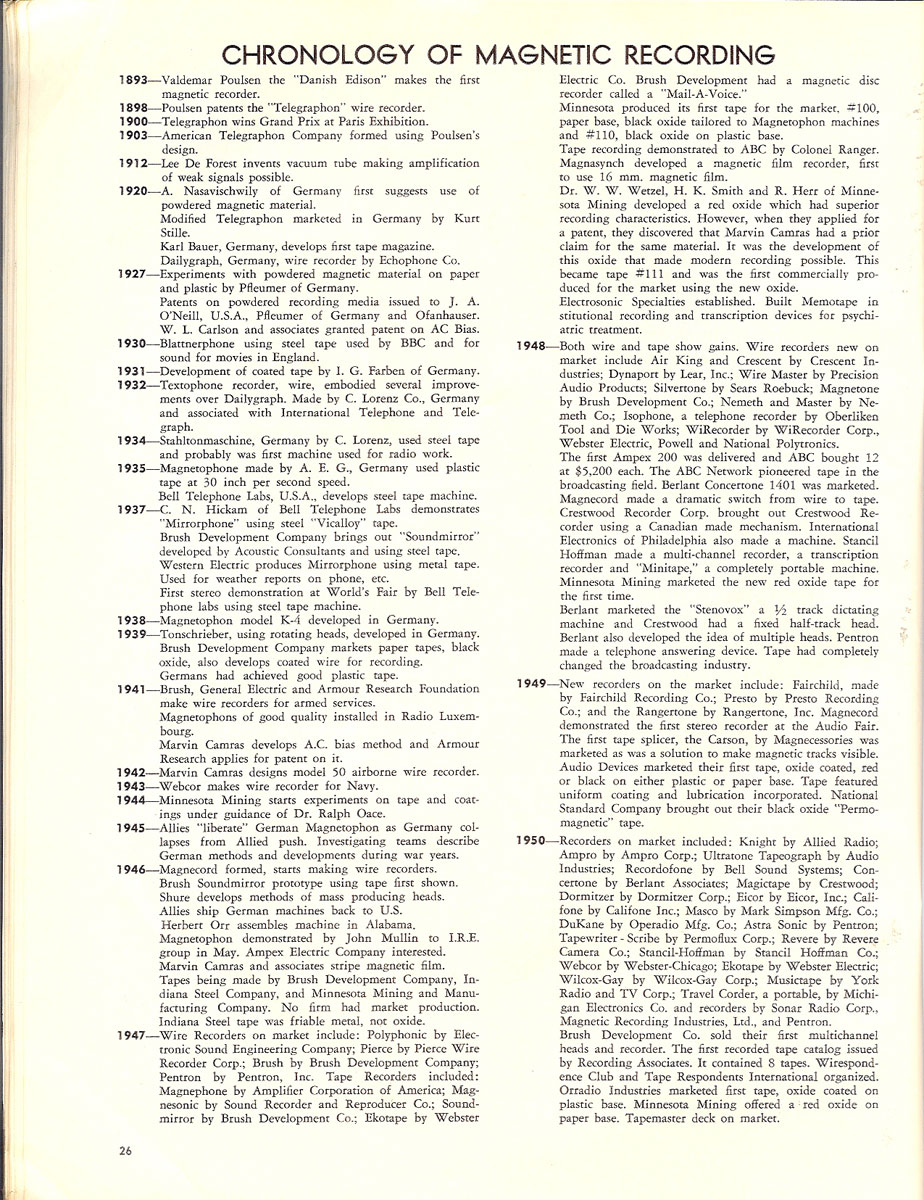
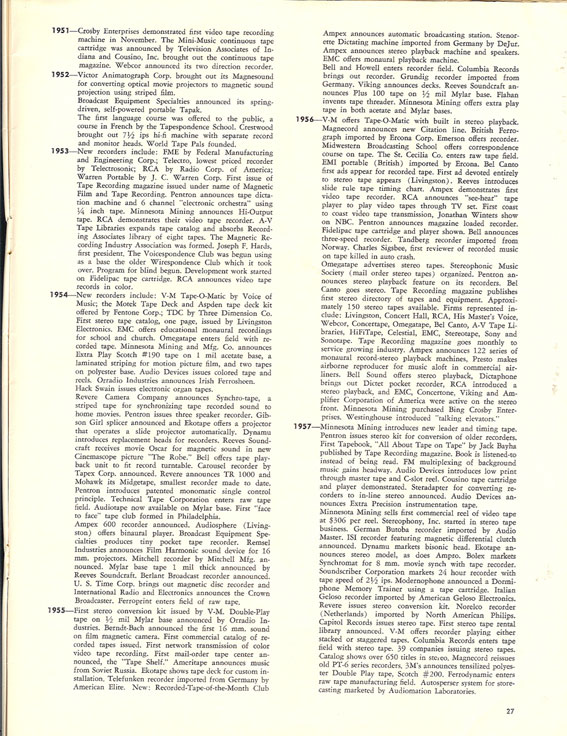


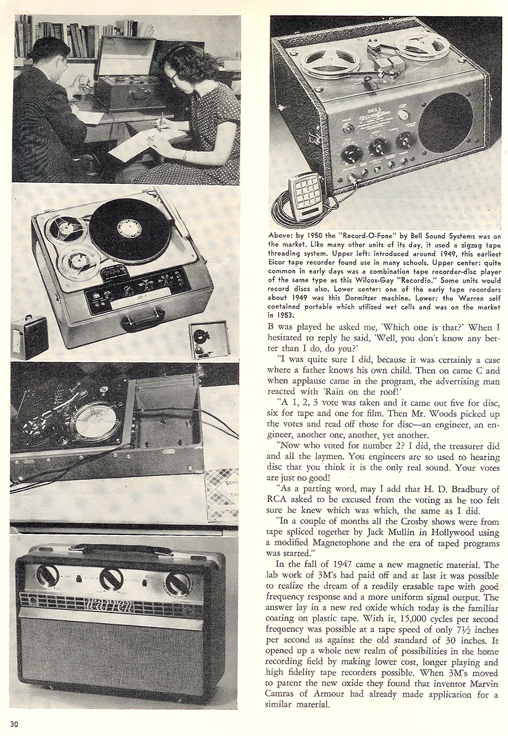
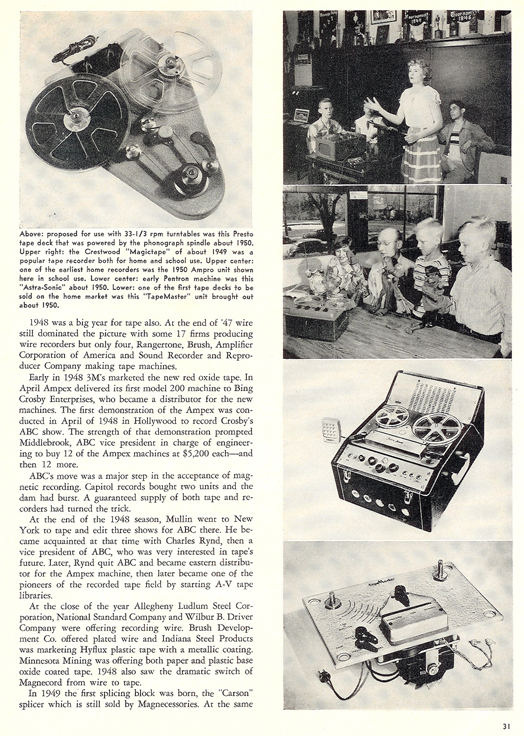
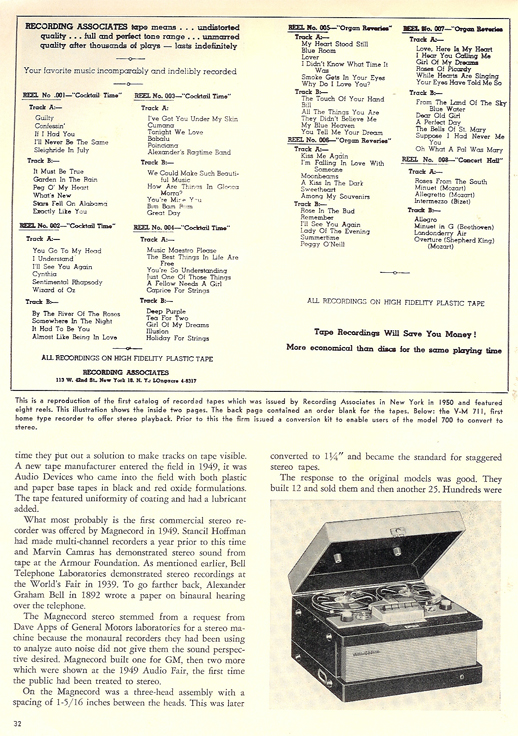

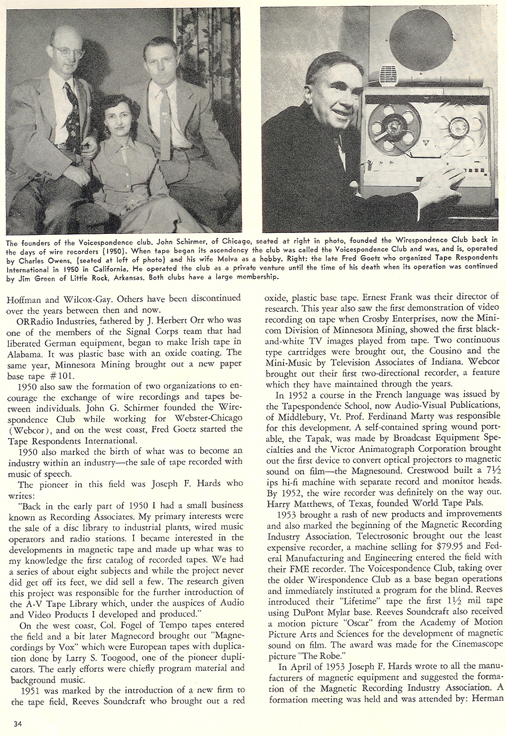
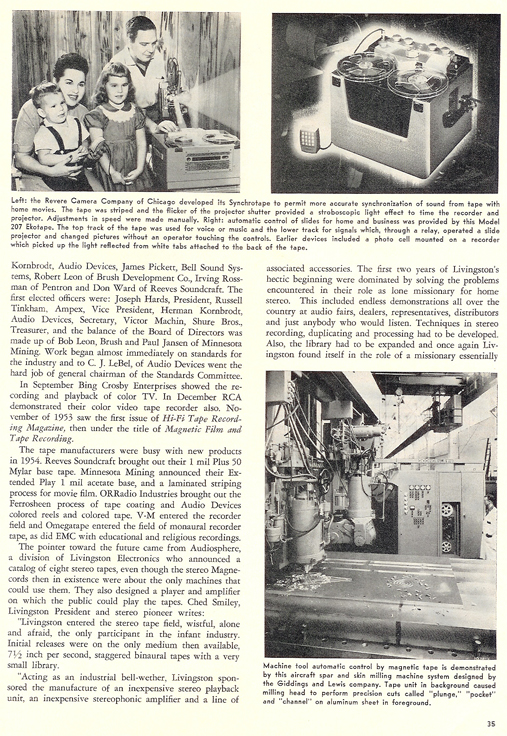

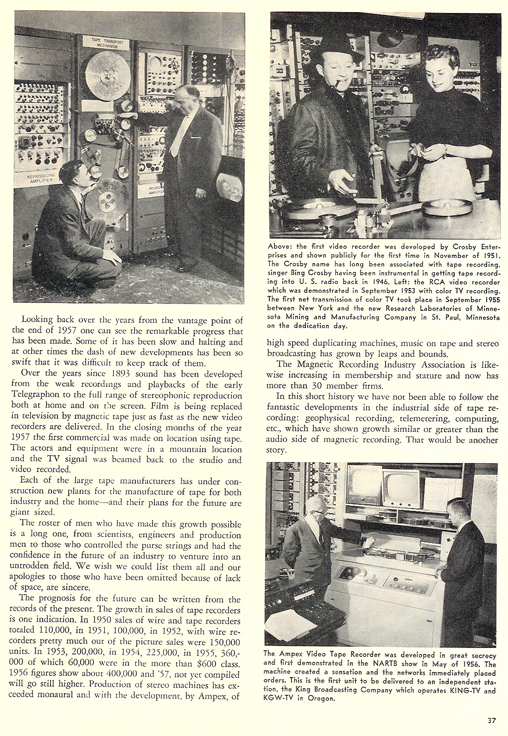
See also multi-track recording

